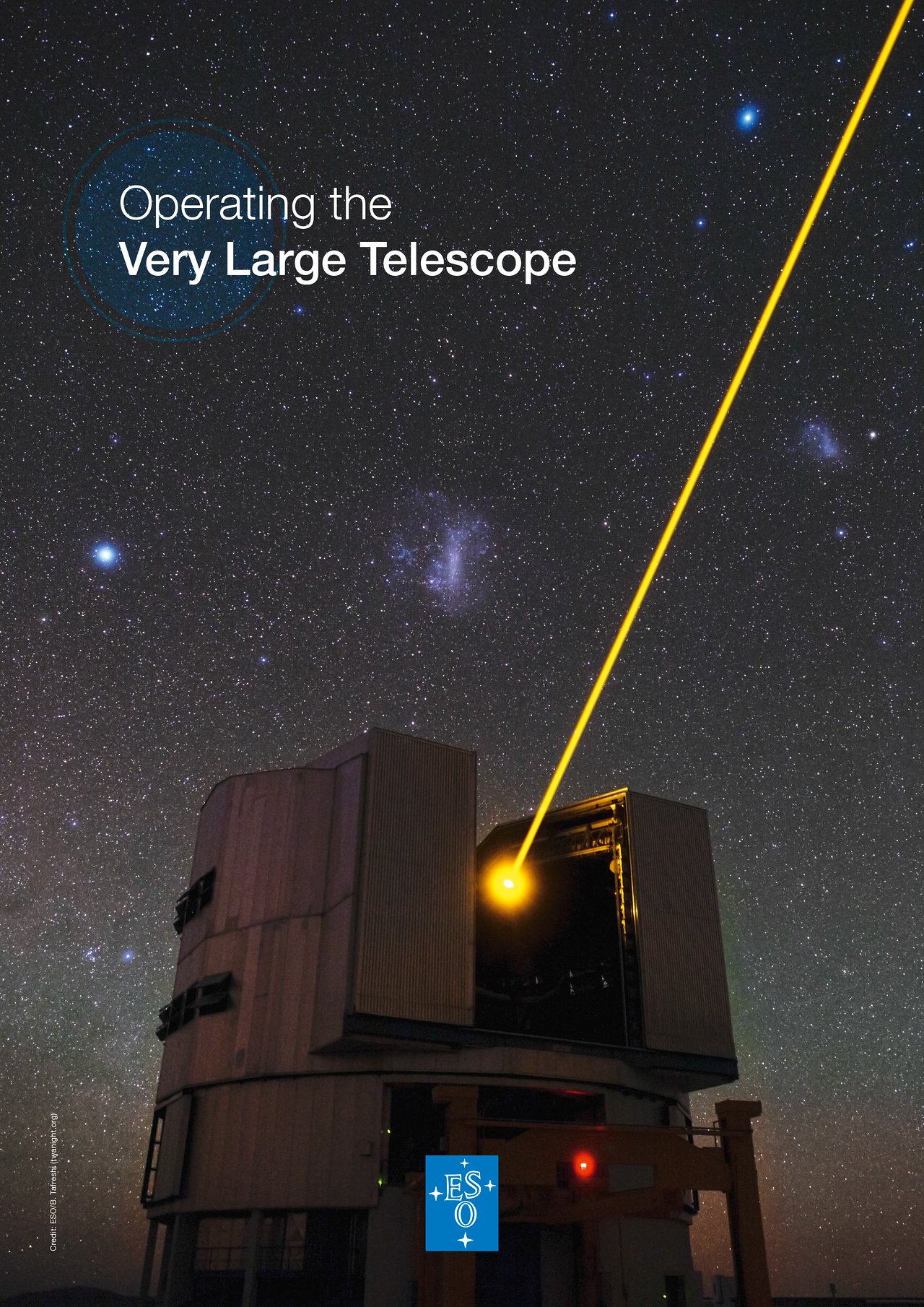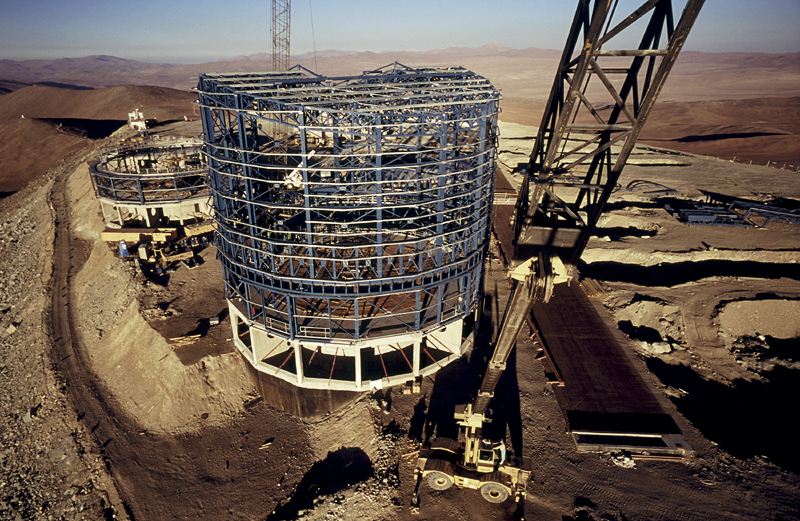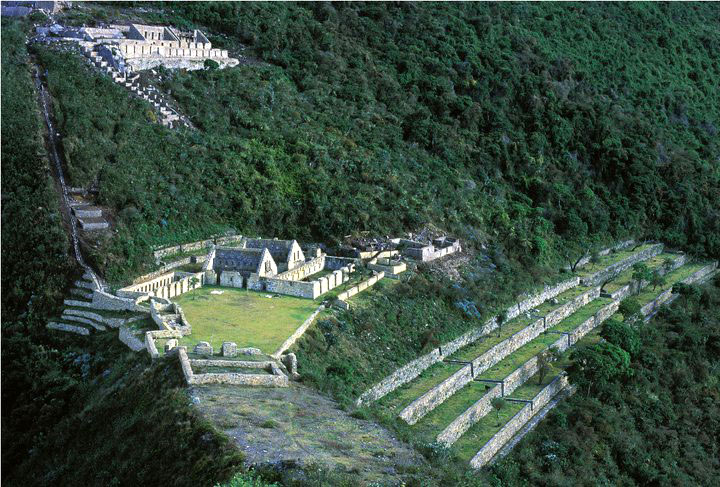Judi Lynn
Judi Lynn's JournalCampaign to sink Colombia peace process turns violent in Miami
written by Adriaan Alsema December 4, 2017
Violence erupted in a Miami supermarket over the weekend after migrants campaigned against a peace process near a voter registration booth.
A supporter of the opposition led by controversial former President Alvaro Uribe said in a video recorded at a local hospital that he would file charges over the incident.
The peace process with the Marxist rebels is controversial, particularly among conservative voters.
Opposition supporter Mario Gallo was the first to report the violence. He claimed security personnel violently removed him from the Bodegon supermarket.
More:
https://colombiareports.com/campaign-sink-colombia-peace-process-turns-violent-miami/
Found Them! 72 Unseen Galaxies Found Hiding in Plain Sight
By Elizabeth Howell, Space.com Contributor | November 29, 2017 07:01am ET
Astronomers have found 72 potential galaxies hiding in plain sight inside a vast patch of the sky previously observed by the Hubble Space Telescope. The discovery not only gives astronomers new targets to study, but also will aid studies of star motion and formation and other properties of old galaxies, the researchers said.
The new study was performed by the MUSE instrument on the European Southern Observatory's Very Large Telescope in Chile. Astronomers discovered the newfound galaxies while measuring the distances and properties of 1,600 galaxies captured by the Hubble Space Telescope during its Ultra Deep Field survey.
The 72 newfound galaxies shine in Lyman-alpha light, which is a particular wavelength of ultraviolet light. Because the galaxies are receding from us, their wavelength was stretched from ultraviolet to visible, or near-infrared. [26 Stunning Photos from the Hubble Ultra Deep Field]
- click for image -
https://img.purch.com/h/1400/aHR0cDovL3d3dy5zcGFjZS5jb20vaW1hZ2VzL2kvMDAwLzA3Mi8xMjIvb3JpZ2luYWwvdWx0cmEtZGVlcC1maWVsZC1tdXNlLmpwZz8xNTExOTE3NDYx
The European Southern Observatory's Muse instrument on the Very Large Telescope in Chile captured this view of galaxies in a region of sky included in the Hubble Space Telescope's Ultra Deep Field survey. Muse discovered 72 never-before-seen galaxies in the region.
Credit: ESO/MUSE HUDF Collaboration
The discoveries were made in the Hubble Ultra Deep Field, which is a tiny region of the sky in the southern constellation Fornax (the Furnace). The Hubble data were originally obtained in 2004, two years after NASA space shuttle astronauts visited the space telescope to install the Advanced Camera for Surveys (ACS) and perform other needed maintenance.
More:
https://www.space.com/38925-never-before-seen-galaxies-hubble-ultra-deep-field.html?utm_source=notification




More images:
https://images.search.yahoo.com/search/images;_ylt=AwrTcXs6uB5amvsABWCLuLkF;_ylc=X1MDOTYwNTc0ODMEX3IDMgRiY2sDZWFlcjdmOWNnbDI5ZyUyNmIlM0Q0JTI2ZCUzRGZFVE9PSzFyWUgzS3VfNWJGaWk4THF3a19jX3JYc19ya1E2azM1dGQ0N2NwM1EtLSUyNnMlM0RkayUyNmklM0Q2YjlEbFJub3NFY25ERDNpMDFuSgRmcgMEZ3ByaWQDR1FSNXZNWjdSekdiZkw3WXRhTU9sQQRtdGVzdGlkA251bGwEbl9zdWdnAzEEb3JpZ2luA2ltYWdlcy5zZWFyY2gueWFob28uY29tBHBvcwMwBHBxc3RyAwRwcXN0cmwDBHFzdHJsAzI2BHF1ZXJ5A3ZlcnkgbGFyZ2UgdGVsZXNjb3BlIGNoaWxlBHRfc3RtcAMxNTExOTYyNjk2BHZ0ZXN0aWQDQjQyNjE-?gprid=GQR5vMZ7RzGbfL7YtaMOlA&pvid=DI8GiDEwLjLlO2d6WQqJMBEQMjYwMgAAAAA.lkns&fr2=sb-top-images.search.yahoo.com&p=very+large+telescope+chile&ei=UTF-8&iscqry=&fr=sfp#id=4&iurl=http%3A%2F%2Fupload.wikimedia.org%2Fwikipedia%2Fcommons%2Ff%2Ff0%2FMoonset_over_ESO%2527s_Very_Large_Telescope.jpg&action=close
2,000-Year-Old Killer Whale Geoglyph Found in Peru Desert
By Tom Metcalfe, Live Science Contributor | November 28, 2017 08:37am ET
- click for image -
https://img.purch.com/h/1400/aHR0cDovL3d3dy5saXZlc2NpZW5jZS5jb20vaW1hZ2VzL2kvMDAwLzA5Ni85Njkvb3JpZ2luYWwvcGVydS1vcmNhLWdlb2dseXBoLTIuanBn
Archaeologists rediscovered a giant geoglyph of a killer whale, etched into a desert hillside in the remote Palpa region of southern Peru, after it had been lost to science for more than 50 years.
The 230-foot-long (70 meters) figure of an orca — considered a powerful, semimythical creature in ancient Peruvian lore — may be more than 2,000 years old, according to the researchers.
They said it may be one the oldest geoglyphs in the Palpa region, and older than those in the nearby Nazca region, which is famous for its vast collection of ancient ground markings — the Nazca Lines — that include animal figures, straight lines and geometrical shapes. [See Photos of the Orca Geoglyph of Peruvian Lore]
Archaeologist Johny Isla, the head of Peru's Ministry of Culture in Ica province, which includes the Palpa and Nazca valleys, explained that he saw a single photograph of the orca pattern for the first time about four years ago. He'd seen it while researching studies of geoglyphs at the German Archaeological Institute in Bonn.
More:
https://www.livescience.com/61035-ancient-killer-whale-geoglyph-peru.html?utm_source=notification
Argentina death flights: a son's fight for the right to testify against his father
Uki Goñi in Buenos Aires
Tuesday 28 November 2017 03.00 EST
Pablo Verna hasn’t seen his father since a heated discussion in a Buenos Aires hotel bar more than four years ago. But the bitter 2013 conversation which led to their estrangement was not about family matters.
Over three painful hours, retired army doctor Julio Alejandro Verna grudgingly confirmed his son’s worst suspicions: during Argentina’s 1976-83 dictatorship he had sedated political prisoners so they could be thrown – still alive – from military planes into the freezing waters of the South Atlantic.
“My life has been split into before and after that conversation,” said Verna, 44. The confession was doubly shocking – not only because it confirmed Verna’s worst fears, but also because the identity of the men who participated in the “death flights” has long remained a closely guarded secret.
A pact of silence among the hundreds of former officers serving sentences or currently on trial means that precious little testimony regarding such crimes has been heard from the perpetrators themselves.
More:
https://www.theguardian.com/world/2017/nov/28/argentina-death-flights-a-sons-fight-for-the-right-to-testify-against-his-father
Machu Picchu's Sacred Sister Emerges From Peru Cloud Forest
By John Quigley
November 13, 2017, 7:00 AM CST Updated on November 13, 2017, 9:11 AM CST
The iconic 15th century Inca citadel Machu Picchu attracts more than a million visitors a year to the cloud forests of southern Peru. Sixty kilometers away, another mountaintop refuge built by the Incas 50 years later has languished in obscurity, with barely a dozen visitors a day. The government wants that to change.
The South American nation plans to open up Choquequirao –- known as Machu Picchu’s Sacred Sister -- to the tourist mainstream with roads connecting the site to its world famous predecessor, and a cable car to elevate visitors to 3,000 meters (9,843 feet) above sea level, said Roger Valencia, deputy tourism minister. The excursion is currently a five-day, 60-kilometer round trip on foot, traversing a canyon and crossing the raging Apurimac River.
“The hike is exceptionally beautiful, but it’s tough,” said Valencia, a former tour operator and guide who’s made the trek more than 20 times. “We’ll put in the roads and the cable cars to make it accessible.”
President Pedro Pablo Kuczynski is promoting Choquequirao as part of his goal to double the number of tourist arrivals to 7 million by 2021 to ease the economy’s dependence on industries such as mining, which creates few jobs. Tourism accounts for 3.9 percent of Peru’s gross domestic product, the highest contribution among major Latin American economies after Mexico, and is expected to rise to 4.6 percent in the next decade, according to the London-based World Travel & Tourism Council.
More:
https://www.bloomberg.com/news/articles/2017-11-13/machu-picchu-s-sacred-sister-emerging-from-peru-s-cloud-forest

Choquequirao


More images of Choqueguirao:
https://images.search.yahoo.com/search/images;_ylt=AwrTcXmq4xxaydIAYY.LuLkF;_ylc=X1MDOTYwNTc0ODMEX3IDMgRiY2sDZWFlcjdmOWNnbDI5ZyUyNmIlM0Q0JTI2ZCUzRGZFVE9PSzFyWUgzS3VfNWJGaWk4THF3a19jX3JYc19ya1E2azM1dGQ0N2NwM1EtLSUyNnMlM0RkayUyNmklM0Q2YjlEbFJub3NFY25ERDNpMDFuSgRmcgMEZ3ByaWQDNnlFUUxUZXVUZldyMGhLMU5DbDBJQQRtdGVzdGlkA251bGwEbl9zdWdnAzQEb3JpZ2luA2ltYWdlcy5zZWFyY2gueWFob28uY29tBHBvcwMwBHBxc3RyAwRwcXN0cmwDBHFzdHJsAzE3BHF1ZXJ5A0Nob3F1ZXF1aXJhbyBwZXJ1BHRfc3RtcAMxNTExODQyNzM4BHZ0ZXN0aWQDQjQyNjE-?gprid=6yEQLTeuTfWr0hK1NCl0IA&pvid=H731GzEwLjLlO2d6WQqJMARRMjYwMgAAAABQ4moa&fr2=sb-top-images.search.yahoo.com&p=Choquequirao+peru&ei=UTF-8&iscqry=&fr=sfp#id=112&iurl=http%3A%2F%2Finwanderlust.weebly.com%2Fuploads%2F3%2F7%2F8%2F6%2F37864935%2F308711841.jpg&action=close
We Supported Their Dictators, Led the Failed "War on Drugs" and Now Deny Them Refuge
Saturday, November 25, 2017
By Victoria Sanford, Moyers & Company | News Analysis
President Donald Trump has tied his executive order giving Congress six months to "fix" DACA to constructing a wall between the US and Mexico as well as a rapid and massive deportation of unaccompanied children and families entering the US without a visa.
Trump claims this will stop Central American and other undocumented immigrants from entering the United States. These policies might make it more difficult, but they will not stop the flow of migration because the United States is not the pull factor of migration. Violence in Central American countries is the push factor today, just as it was in the late 20th century.
For much of the 20th century, the US has made strategic decisions that have brought great harm to Central Americans -- siding with dictators in the 1980s as our Cold War proxy to "fight communism," and siding with corrupt national governments in the 21st century to "fight drug traffickers."
The violent image of unrestrained power in Guatemala in the 1980s was an Army soldier or tank confronting unarmed civilians. Armed power in Guatemala today is represented by a heavily equipped police officer in a black uniform and a ski mask driving a four-wheel-drive truck that may or may not have license plates. Nonetheless, violence in Guatemala today has its roots in the period of military dictatorship and civil war.
More:
http://www.truth-out.org/news/item/42694-we-supported-their-dictators-led-the-failed-war-on-drugs-and-now-deny-them-refuge
Neuroscientists have identified how exactly a deep breath changes your mind
Neuroscientists have identified how exactly a deep breath changes your mind

In times of stress, science shows focusing on breathing can really help. (Reuters/Lucy Pemoni)
WRITTEN BY
Moran Cerf
Kellogg School of Management, Northwestern University
1 hour ago
Breathing is traditionally thought of as an automatic process driven by the brainstem—the part of the brain controlling such life-sustaining functions as heartbeat and sleeping patterns. But new and unique research, involving recordings made directly from within the brains of humans undergoing neurosurgery, shows that breathing can also change your brain.
Simply put, changes in breathing—for example, breathing at different paces or paying careful attention to the breaths—were shown to engage different parts of the brain.
Humans’ ability to control and regulate their brain is unique: e.g., controlling emotions, deciding to stay awake despite being tired, or suppressing thoughts. These abilities are not trivial, nor do humans share them with many animals. Breathing is similar: animals do not alter their breathing speed volitionally; their breathing normally only changes in response to running, resting, etc. Questions that have baffled scientists in this context are: why are humans capable of volitionally regulating their breathing, and how do we gain access to parts of our brain that are not normally under our conscious control. Additionally, is there any benefit in our ability to access and control parts of our brain that are typically inaccessible? Given that many therapies—Cognitive Behavioral Therapy, trauma therapy, or various types of spiritual exercises—involve focusing and regulating breathing, does controlling inhaling and exhaling have any profound effect on behavior?
This recent study finally answers these questions by showing that volitionally controlling our respirational, even merely focusing on one’s breathing, yield additional access and synchrony between brain areas. This understanding may lead to greater control, focus, calmness, and emotional control.
More:
https://qz.com/1132986/neuroscientists-have-identified-how-exactly-a-deep-breath-changes-your-mind/
U.S. Military And CIA Leaders May Be Investigated For War Crimes
11/18/2017 09:37 am ET Updated 2 hours ago
On November 3, the chief prosecutor of the International Criminal Court (ICC) informed the court’s Pre-Trial Chamber, ”[T]here is a reasonable basis to believe that war crimes and crimes against humanity have been committed in connection with the armed conflict in Afghanistan.”
In what Amnesty International’s Solomon Sacco called a “seminal moment for the ICC,” Chief Prosecutor Fatou Bensouda asked the court for authorization to commence an investigation that would focus on US military and CIA leaders, as well as Taliban and Afghan officials.
Bensouda wrote in a November 14, 2016, report that her preliminary examination revealed “a reasonable basis to believe” the “war crimes of torture and ill-treatment” had been committed “by US military forces deployed to Afghanistan and in secret detention facilities operated by the Central Intelligence Agency, principally in the 2003-2004 period, although allegedly continuing in some cases until 2014.”
The chief prosecutor noted the alleged crimes by the CIA and US armed forces “were not the abuses of a few isolated individuals,” but rather were “part of approved interrogation techniques in an attempt to extract ‘actionable intelligence’ from detainees.” She added there was “reason to believe” that crimes were “committed in the furtherance of a policy or policies ... which would support US objectives in the conflict of Afghanistan.”
More:
https://www.huffingtonpost.com/entry/us-military-and-cia-leaders-may-be-investigated-for_us_5a1044f6e4b023121e0e9313?section=us_politics
U.S. Rep. Takano, Tampa and St. Pete councils support closer U.S.-Cuba ties
Cuba Central • October 21, 2017
On October 14, Representative Mark Takano (CA-41) became the first U.S. Member of Congress to visit Cuba in the aftermath of the State Department’s announcement that it would shrink its diplomatic mission in Havana and reciprocally expel Cuban diplomats from the U.S. He is also the first Member of Congress to directly engage with Cuban officials in Havana since President Trump’s June announcement that he would instruct his administration to increase restrictions on trade with and travel to Cuba. Rep. Takano (in photo at top) traveled on a delegation organized by CDA to advance dialogue and mutual exchange between U.S. and Cuban LGBTQ communities.
At the same time, a delegation of City Council members from the Florida cities of Tampa and St. Petersburg were in Havana, the first such official trips by a council in either city. That members from the Tampa-St. Petersburg area, which is home to the third largest Cuban American population in the U.S. behind Miami and New York City, were willing to vote in favor of a trip to strengthen U.S.-Cuba ties shows how far support for engagement has come.
Following their trips, Rep. Takano and the chairs of both the Tampa and St. Petersburg City Councils all expressed dismay at recent cutbacks to diplomatic missions, and voiced their support for closer U.S.-Cuba ties moving forward.
The visits are a marker of how officials from our government should interact — with a focus on mutual respect and collaboration.
More:
http://progresoweekly.us/u-s-rep-takano-tampa-st-pete-support-closer-u-s-cuba-ties/
260-Million-Year-Old Fossil Forest Discovered in Antarctica
By Stephanie Pappas, Live Science Contributor | November 15, 2017 05:54am ET
Antarctica wasn't always a land of ice. Millions of years ago, when the continent was still part of a huge Southern Hemisphere landmass called Gondwana, trees flourished near the South Pole.
Now, newfound, intricate fossils of some of these trees are revealing how the plants thrived — and what forests might look like as they march northward in today's warming world.
"Antarctica preserves an ecologic history of polar biomes that ranges for about 400 million years, which is basically the entirety of plant evolution," said Erik Gulbranson, a paleoecologist at the University of Wisconsin-Milwaukee. [See Images of a Fossil Forest Unearthed in the Arctic]
Trees in Antarctica?
It's hard to look at Antarctica's frigid landscape today and imagine lush forests. To find their fossil specimens, Gulbranson and his colleagues have to disembark from planes landed on snowfields, then traverse glaciers and brave bone-chilling winds. But from about 400 million to 14 million years ago, the southern continent was a very different, and much greener place. The climate was warmer, though the plants that survived at the low southern latitudes had to cope with winters of 24-hour-per-day darkness and summers during which the sun never set, just as today.
More:
https://www.livescience.com/60944-ancient-fossil-forest-discovered-in-antarctica.html?utm_source=notification
Profile Information
Member since: 2002Number of posts: 160,516